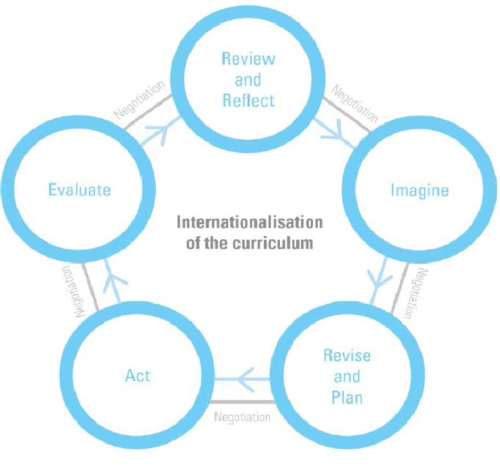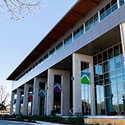Guidelines for Internationalizing your Curriculum

Before going into the internationalization of the curriculum, it is important to review the curriculum design process. All course design begins with the adoption of course/student global learning outcomes, followed by the development of an assessment (what will my students be able to do at the end of the activity/course), followed by the creation of learning activities and course content.
Approaches to Curriculum Internationalization:
IoC is the process by which course content is enhanced with global elements. This can be done by creating a study abroad program, however, many of our students do not have the time or financial ability to participate in study abroad programs; therefore, focusing our internationalization efforts into the curriculum will enhance the students learning with international and intercultural course outcomes.
Enhancing your curriculum:This requires preparation and rethinking of the course goals to include intercultural issues and approaches. It involves enhancing your curriculum by adding Global Learning Outcomes (specifically awareness, perspective, and engagement); selecting active learning opportunities that reflect diverse points of view on events, topics, or issues as well as incorporating your students' personal experiences to enrich learning. |
Transforming your curriculum:This requires the most extensive form of IoC. It is a complete revision of course content to include various cultural perspectives and world views and allows students the opportunity to move between two or more world views. Study abroad programs that require students to become immersed in another culture are good examples of transformative experiences. (Note: this approach may not be appropriate for all courses or disciplines). |
The Process of Internationalization of the Curriculum
|
Any process of curriculum design involves decisions about program and learning outcomes, assessment tasks, and teaching and learning arrangements. It is common to hear faculty talk with both passion and concern about the "crowded curriculum;" and how there is never enough time to "fit everything in." Often such comments result from a focus on the delivery of content rather than on engaging students in active learning. An internationalized curriculum must focus on more than content. To make sense of and thrive in the world, students need to develop their ability to think critically, intercultural competencies, and problem-solving skills. The diagram provides the process of internationalizing your curriculum. While each stage of the process appears to be separate and bounded, in practice, these boundaries are soft and permeable. The process of reviewing and reflecting often leads to imagining new possibilities, which then stimulated further review and reflection. Below is the process explained. |
 |
-
To what extent is my curriculum internationalized?
-
What other ways of thinking and doing are possible?
-
Given the possibilities for Internationalizing the curriculum, what changes do I want to make to the course?
-
How will I know if I have achieved my internationalization of the curriculum goals?
-
To what extent have I achieved my internationalization goals?






